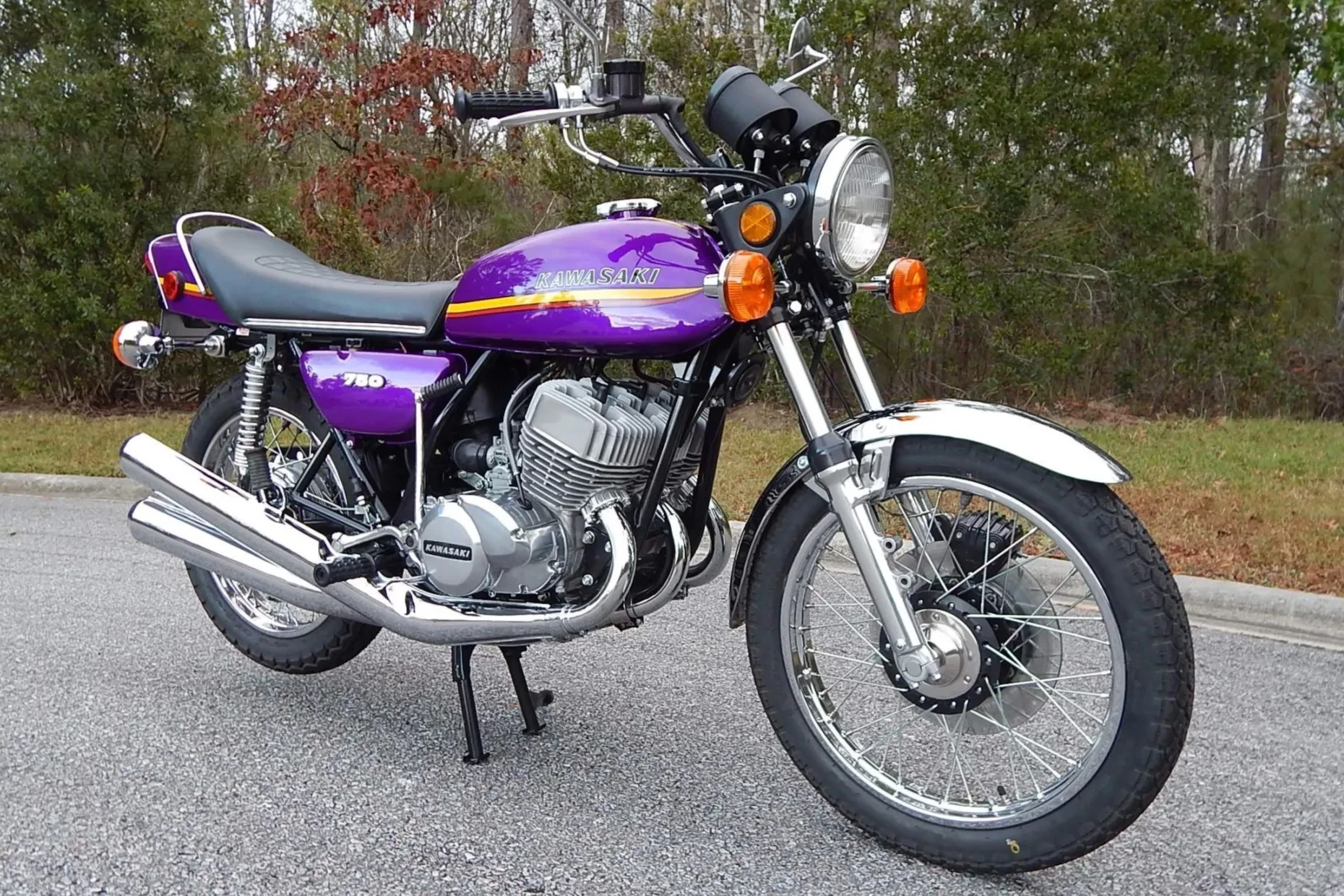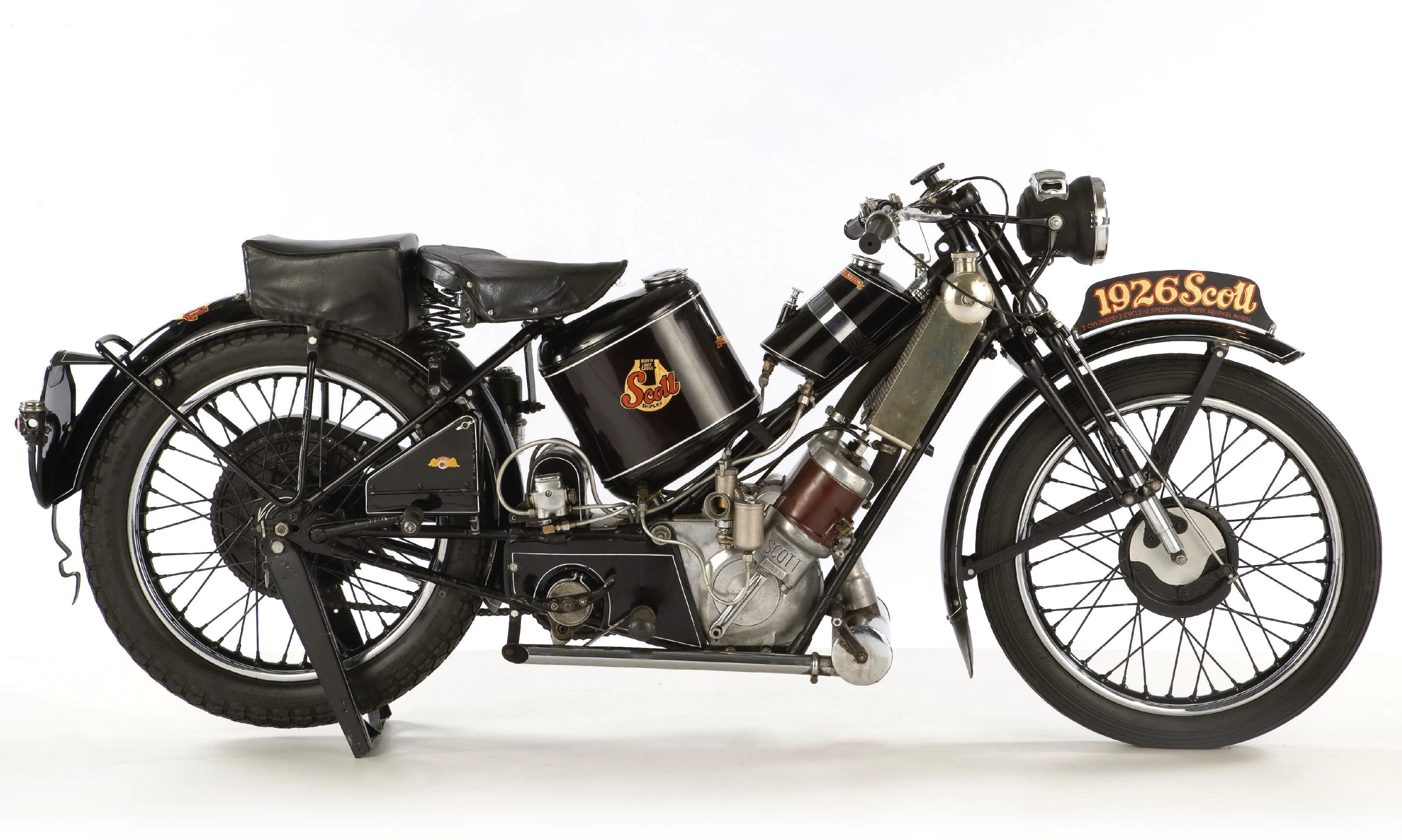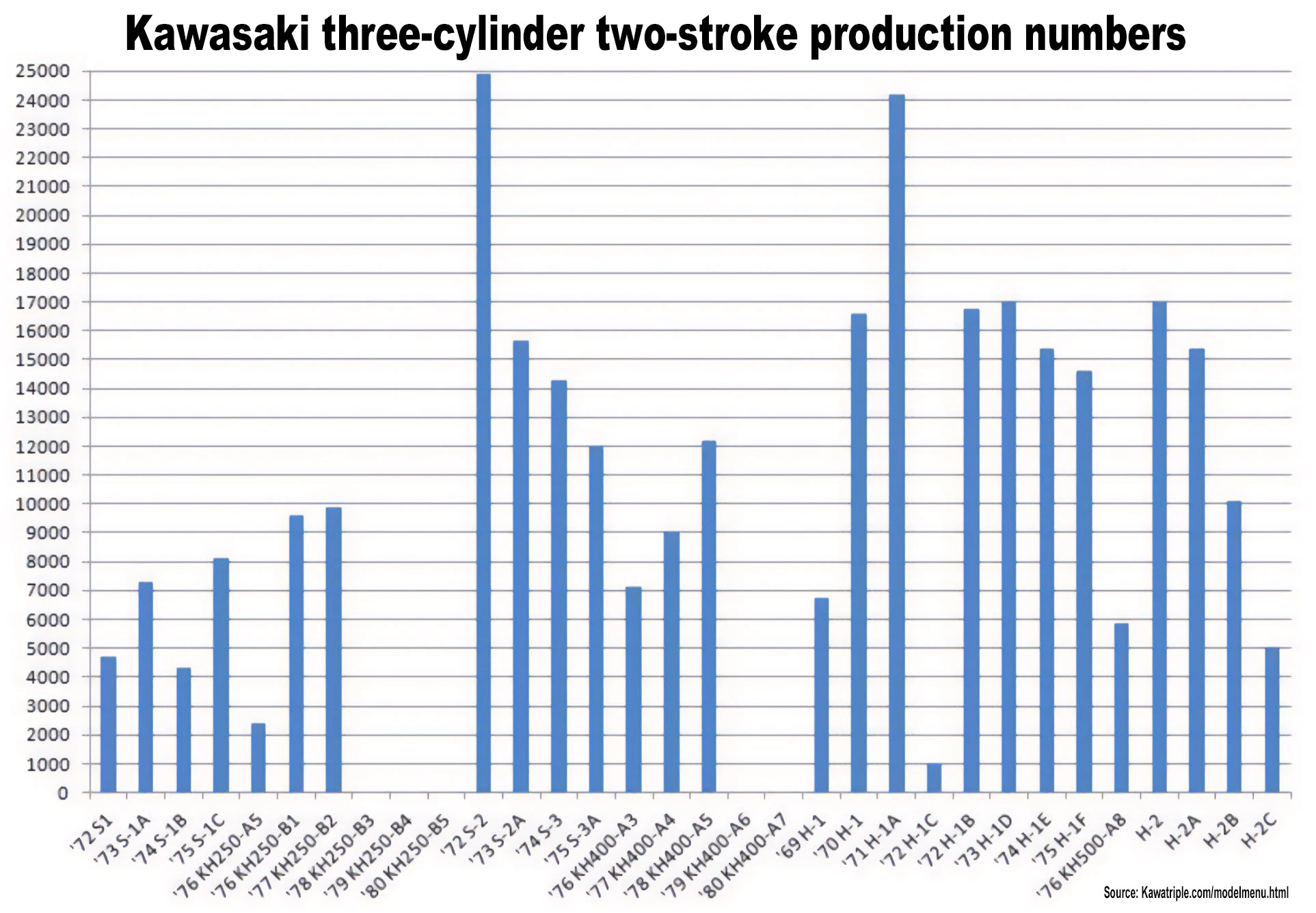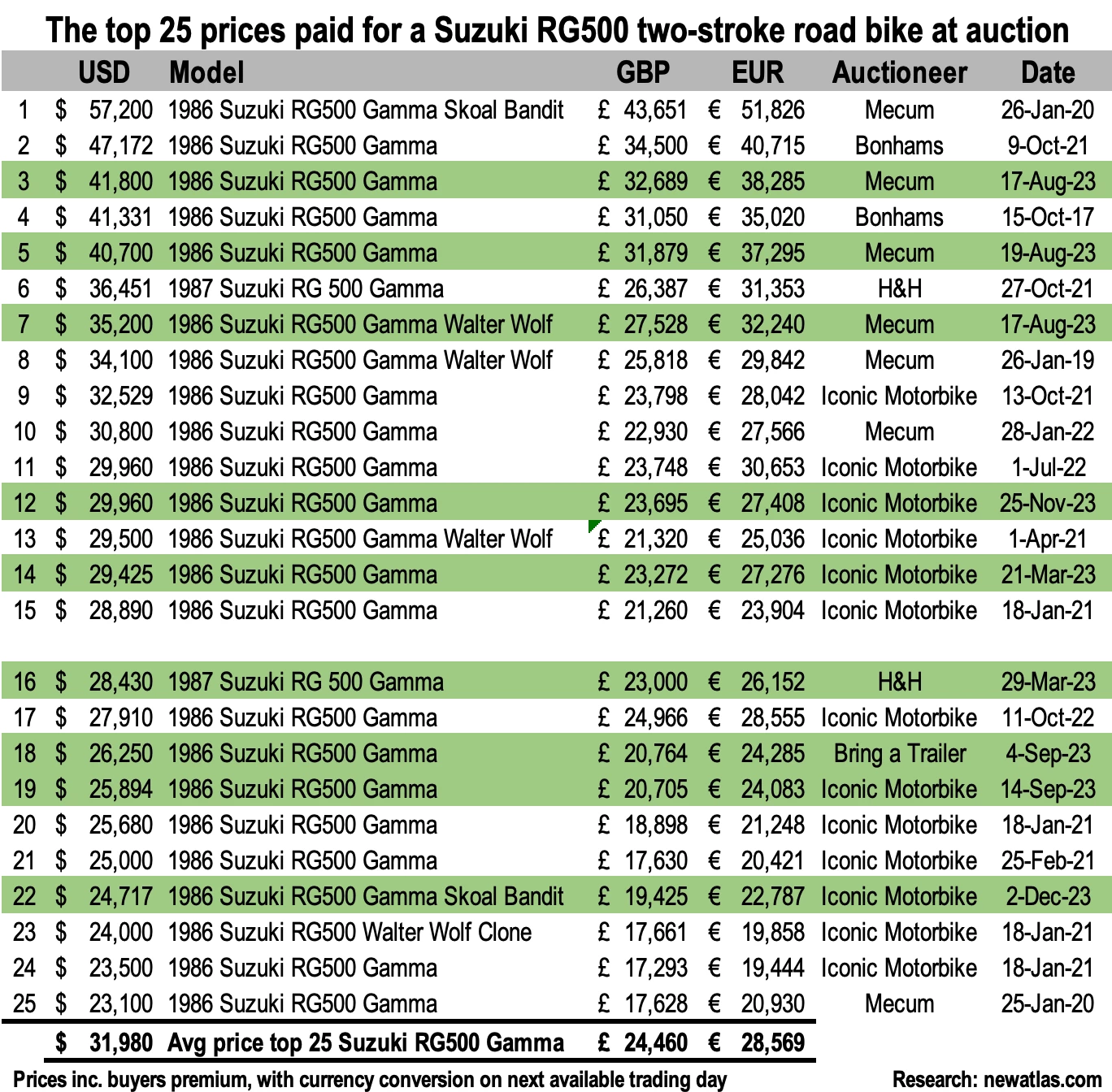Two-stroke streetbikes have never sold well at auction – but in the last few weeks, something strange has been happening. Kawasaki's Mach IV H2, the notorious 750cc "Widowmaker," is setting record prices after a flurry of sales to a single buyer.
To some people, any two-wheeler is a death trap. But even among hardened motorcyclists, there are some bikes that have built a reputation for being uniquely violent and barely controllable. The H2's older and smaller 500cc H1 sibling is top of that list, and it earned the "widowmaker" tag. The 1971-1975 Mach IV H2 was retrospectively added to that list a few decades after it was new, probably because if the 500cc triple was scarey, a 750cc version was obviously moreso.
Ironically, the H2 had solved many of the H1's quirks and was a great bike.
Fifty years later, it looks as staid, conservative and friendly as any other Universal Japanese Motorcycle of the era with its bench seat, bucket headlight, triple pipes and sit-up-and-beg riding position. But this bike was outrageous on debut, the fastest thing you could buy in its day. It was so much faster than anything that came before it that it won production races across the world. Anyone who's ridden a 250cc two-stroke dirt bike will have some sense of what a 750cc, three-cylinder two-stroke engine (that's three 250cc motocross engines strapped together) could make 74 horsepower feel like.
When the H1 was near its potent mid-range, it didn't need much throttle for the front wheel to be headed for your face, no matter what else you were trying to achieve at the time. Couple this power delivery with the chassis, braking and tire technology of the day, and you get the picture; this was the ultimate bike for the brave and the foolhardy. The Mach III made you pay attention, and if you didn't, it would bite you.

No-one who raced through this period has anything but respect for the Kawasaki H1, and in preparation for this article, I spoke to many of the luminaries of the period who raced and tested H1 Kawasakis and all agreed - it was a handful, but it was a great bike.
IMHO (and those of who were there), the 500cc H1 got its widowmaker sobriquet unfairly, and the H2 got the widowmaker tag quite unjustly.

That's in hindsight ... the "Widowmaker" label arrived much later for the H2 750. In its day this was the bike to beat on the racetrack, and it certainly wouldn't have found the success it did if it was truly an untamable horror. But younger riders who grew up with stiffer frames, radial tires, triple-disc brakes, anti-wheelie and traction control systems would come to look back on it as the peak of streetbike insanity.
Still, it's never been viewed as a particularly collectable bike. Japan's lack of success at auction reflects its success in selling motorcycles. Kawasaki got some 47,000 Mach IV H2s out the door. In short, the company sold too many motorcycles for them to ever be rare.
So what on Earth is happening lately?
Mecum’s annual late January Las Vegas Motorcycle auction is the biggest in the world and so important that the prices achieved there influence prices for the following 12 months – mainly in America (the largest, most buoyant market), but also in England, Europe, and as far away as Australia and New Zealand.
Almost every year, a new bike seems to soar in value to grab the “most desirable” model mantle by achieving record prices in Las Vegas. Sales achieved by Harley-Davidson’s Knucklehead in Vegas in 2021 and 2022 raised the watermark more than $50,000 a bike inside nine months, and Ducati’s 750SS (from $176,000 in 2016 to $247,500 in 2019) and Honda's six-cylinder CBX ($26,950 in 2020, $34,100 in 2021, $49,500 in 2022) are just two examples of landmark bikes whose auction star status was validated in Las Vegas.
This year the real star of the show was well-hidden, because its prices rose from such a low base that even by doubling in value, the Kawasaki 750 triple didn't appear among the top prices of the 2,000-plus motorcycles on offer ... and no-one seemed to notice.
Auction prices of the 750cc two-stroke Kawasaki H2 since Mecum 's January 2023 Las Vegas auction have been climbing, and at the most recent 2024 auction have now surpassed those of the original "widowmaker" (the 500cc H1 triple) and the iconic Kawasaki Z1 903cc four-stroke which followed it some 18 months later. On its present trajectory, the H2 will surpass Suzuki's 1986 limited-edition RG500 Gamma MotoGP Replica to claim the two-stroke road bike auction crown (an equivalent table of prices for the RG500 can be found in the image gallery).

Let's start with a list of Kawasaki 1970s road bike sales made by Mecum during Las Vegas 2024. That's it in the chart directly above with the two-strokes shaded in green. Those prices become a little more significant if you see where they fall in the all-time history of H2 prices.
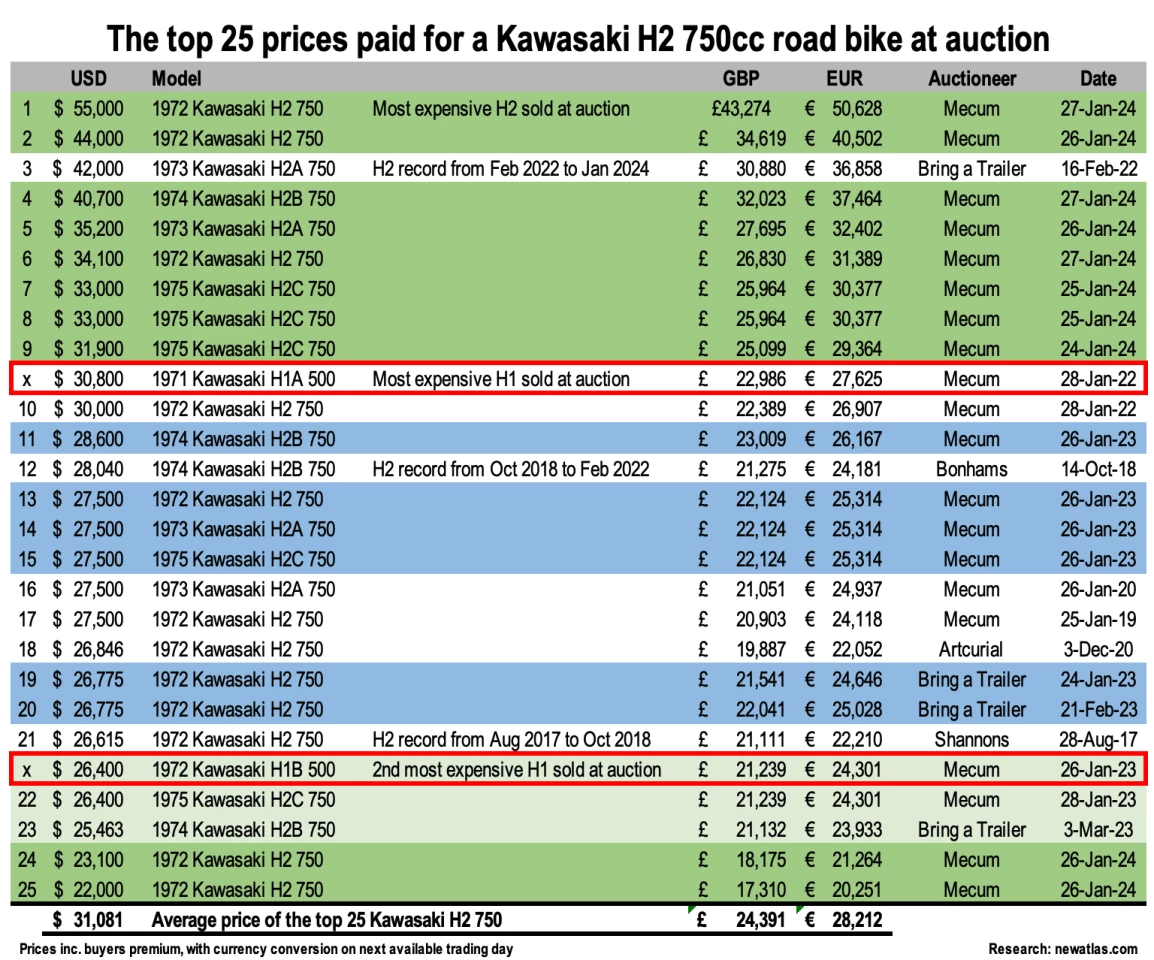
As you can now see from the above list, prices really moved in 2023 (the blue shaded bikes sold in 2023), and the remarkable prices fetched in January 2024 (green-shaded bikes) then eclipsed them. Both years saw the majority of the top 10 prices ever achieved – 17 of the top 25 H2 prices have been paid in the last 13 months.
Eight of the highest nine prices in history for a H2 were paid between 24 January and 27 January 2024, and here's the kicker: they all sold to the same anonymous telephone bidder.
So who was it, and what's the play here?
Mecum had not previously sold to the bidder ... and that's all we know about who it might be, where they're from, or why someone might want eight pristine 50-year-old two-stroke monsters like these.
Mecum's motorcycle head is Greg Arnold, and Greg was of the opinion that the top H2 Kawasakis sold this year were going to remain in their current pristine shape. "Most buyers would not likely ride these bikes, as their restoration level is quite high. I think their visual presentation is what is important to most."

Is someone trying to do a "Bunker Hunt" and corner the market ... For something no-one really wanted all that much? Are prices being deliberately manipulated? If so, where's the win? Is there some business venture that might require eight or more perfect specimens of a 50-year-old bike?
The first two seem unlikely (manipulation is a lot easier when the numbers are lower), and the only plausible business scenario we can come up with beyond the speculative nature of collecting, is that someone is setting up a "Planet Hollywood" for motorcyclists and needs lots of display quality motorcycles quickly. If that's the case, what other motorcycles are being collected for the venture?
Until February 2022, the H2 received little love at American auctions, with the record H2 price at auction achieved in England (Bonhams |£21,275 |US$28,040 | Stafford | October 2018) and prior to that in Australia (Shannons AUD33,500 | US$26,615 | Sydney | August 2017).
In scouring the records, we realized that the H2 had not been sold in its native Japan, and that led to another plausible theory: they are being repatriated to Japan where they are appreciated for their place in motorcycle history far more than they are in Western markets. For the Japanese, the H2 is an object of national pride – a bike that took on the world and seriously kicked butt.
In 2016, writer/engineer Kevin Cameron wrote an article about the H2 750 and its racing roots (he was there) in Cycle World, where he noted, "Recently, a wave of 'H2 appreciation' swept over the Japanese collectors, for their agents were everywhere for a time, buying up any H2 they could find."
We don't know that H2s being repatriated to their home country is the case here, but it seems the most likely explanation, because people have been playing international arbitrage and shipping their cars and bikes internationally to get the best prices for decades.
But we're still open to ideas, and we'd love to hear yours in the comments – especially if you've just come into possession of a fresh brace of Widowmakers!

